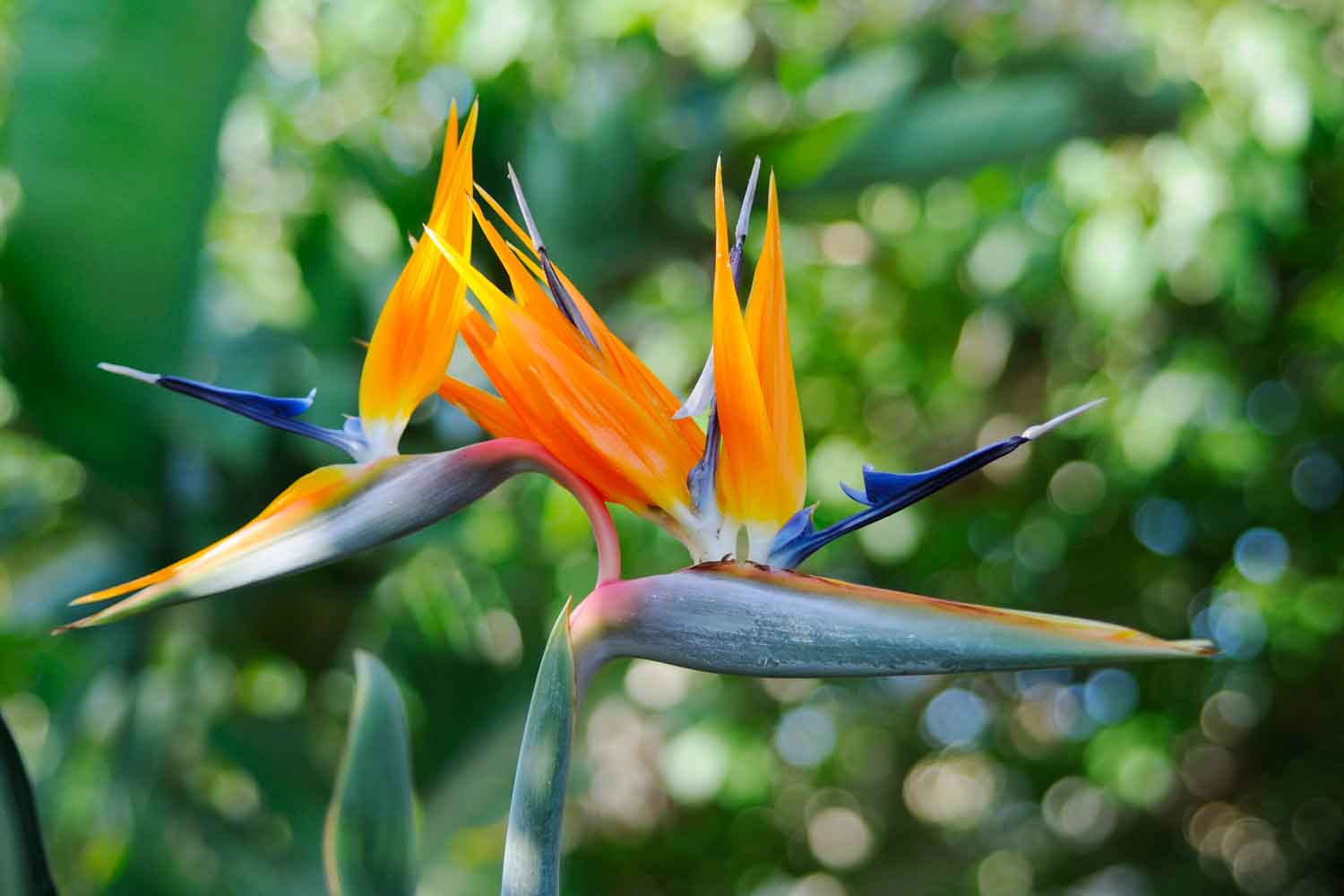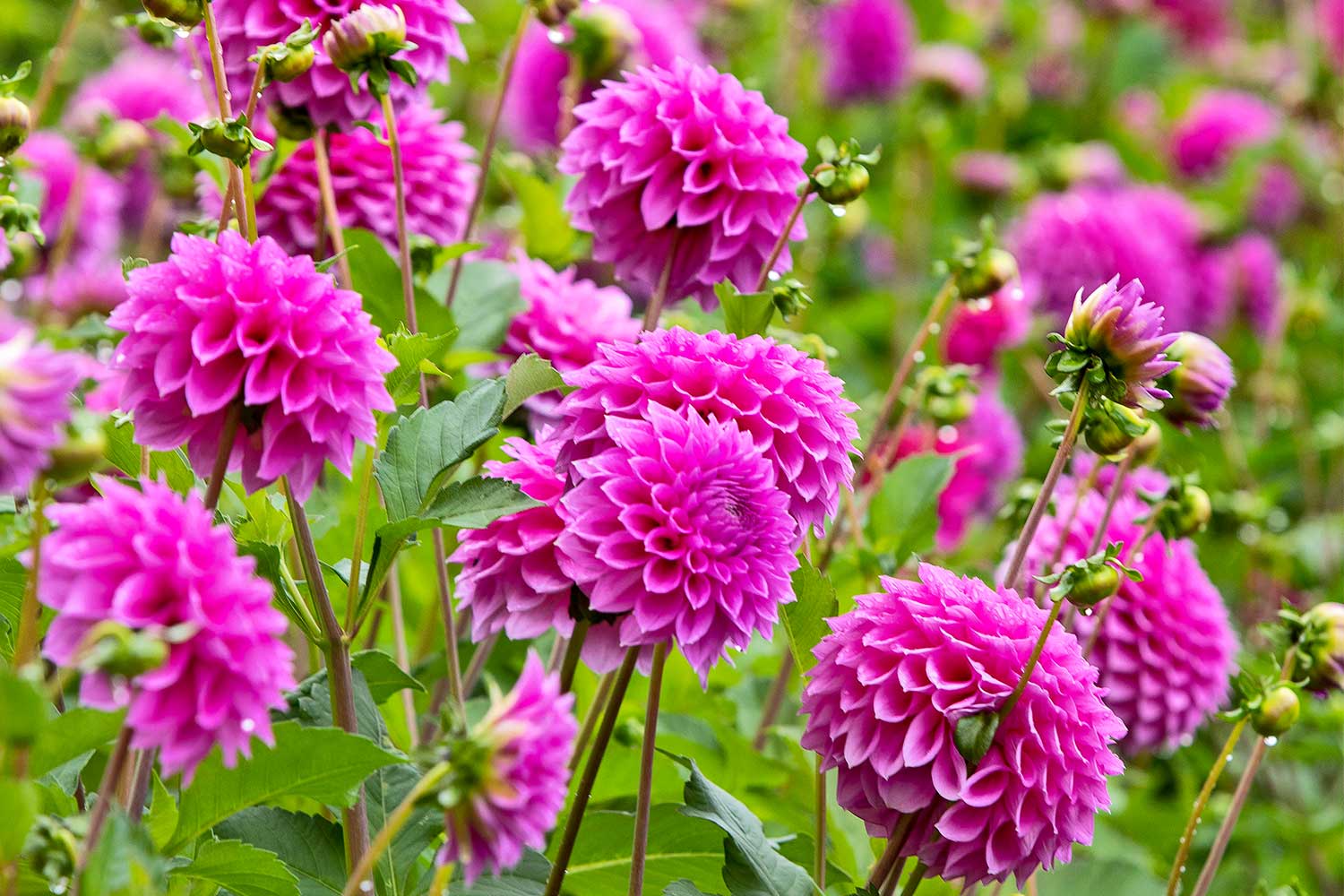It’s not hard for flowering plants to stick it out through winter, but nothing stands out quite like the bird of paradise plant.
What is a Bird of Paradise plant?
Looking like one of the many fabulous birds of tropical Indonesia and Papua New Guinea, the flamboyant bird of paradise flower (Strelitzia spp, also called crane flowers) come in a shock of orange, yellow, blue and red against the from the tall, dense, grey-green or blue-green leaves.
The flower structure is one of the most unusual in the plant kingdom.
The base of the flower, which is shaped like a boat or a canoe and looks like the beak of a crane bird, is the bract, or modified leaf.
Out of this emerges two erect points that are the petals, surrounded by a fan of sepals (the petals’ protector), making the flower look like a bird’s spectacular plumage. Sometimes the bract will produce more than one flower.
Fast facts: how to grow bird of paradise
- Name: Strelitzia
- Climate: It produces its stunning flowers most of the year – but especially so in winter – when conditions are perfect, which are a warm climate,
- Soil: Plant in rich, acidic, free-draining soil, water when required and give it slow-release fertiliser in spring and summer.
- Position: a sunny spot with protection from midday sun with no frost.
- Feeding: give it slow-release fertiliser in spring and summer.
- Watering: plenty of water, but it is quite hardy and can survive extended dry periods.
- When to plant: you can plant at any time of the year. It usually flowers between April and November, with best blooms during winter time. Random spot-flowering also may occur.
How many types of Bird of Paradise are there?
There are three types of the South African native bird of paradise plant grown in Australia, and what makes them different are the shapes of their leaves. Strelitzia reginae has leaves that look like boat paddles, S. nicolai has leaves like a banana tree, while the leaves of S. juncea are curled around the stem so they look like skinny sticks. You can have a bird of paradise whatever your garden situation, here’s how to choose.

Do birds of paradise need sun?
Bird of Paradise plants prefer bright, indirect sunlight. They need several hours of direct sunlight each day to flower and grow properly. In Australia, they are best suited for outdoor cultivation in areas with plenty of sunlight.
How to care for your bird of paradise plant
1. Strelitzia reginae
This looks stunning as a feature plant in a structural landscape, such as part of a rockery, or by a swimming pool where, if you have the space, you can plant a mass of them so they line the length of the pool closest to your boundary.
A bonus is that the leaves won’t fall into your pool water.
It needs plenty of room because it grows in a clump about 1m wide. The stems grow up to 2m, and the leaves are about 20cm long and 15cm wide.

2. Strelitzia nicolai
This is known as the giant bird of paradise because it can grow into a tree with multiple stems. Give it some space and it will return the favour with loads of drama. It’s tall banana-like leaves flutter in the breeze and create a true tropical effect.
The flower bract is dark blue and the petals and sepals are white, often with tinges of paler blue or deep pink.
It doesn’t like frost or strong winds, but otherwise is very hardy. Plant in rich, acidic, free-draining soil, water when required and give it slow-release fertiliser in spring and summer.

3. Strelitzia juncea
When young, the leaves of S. juncea look like the broad ‘paddles’ of S. reginae but, as it matures, the leaves shrink until the stems look rush-like and quite striking.
It’s also a much smaller plant, growing only to about 1.5m, and it’s slower growing, taking about three years to flower. The flowers are similar in colour to S. reginae, but a bit smaller.
If your garden is small, or you have just a courtyard, but long for a tropical theme, this is perfect. You can even grow them in pots. It’s really hardy and tolerates hot summers and very mild frosts.
Plant in rich, acidic, free-draining soil, water when required and give it slow release fertiliser in spring and summer.
Can birds of paradise grow in pots?
You can also grow it in a pot in your home or office where it will add a dramatic, sculptural element to your interiors.
You’ll need a large pot, at least 400mm wide, because it has a large root system.
Fill the pot with quality potting mix and place it in a well-lit spot. Feed it fortnightly in spring and summer with liquid plant food, and water regularly.
Also dust and wash the leaves regularly with a soft cloth.
Where is the best place to plant a bird of paradise?
The best place to grow a bird of paradise is somewhere in full sun. Plenty of sunlight will improve the growth and promote more flowering. The exception to this is in the hotter regions, where partial shade will protect the plants from overwhelming sun and heat.
Can you grow a bird of paradise from a cutting?
Yes, you can grow a bird of paradise from a cutting. Propogating cuttings should take place in early spring by cutting a piece of rhizome with a sharp knife.
How long does it take for a giant bird of paradise to grow?
It takes up to 4 to 5 years to mature before it will first flower. It also requires enough sun, free draining soil and the right amount of water.



